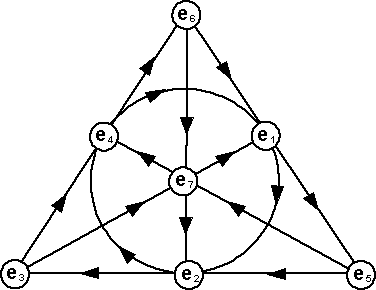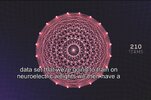Hmmm... I think this also points to or may be part of the "messaging system" of these societies. Some of it is completely visual. The other, in text, but appealing to the reader's imagination. But both point to the same place.
Yes, I think you may be right. Before the printing press really took off in the 16th Century, art would have been one of the main ways of communicating hidden messages without drawing attention to one self. That being said, most of these great works of art may be on public display in art museums and collections today, but when they were first painted, they were intended for the private collections of noblemen. Hence, they would have been seen by a fairly limited audience.
I think novels would take over the main role of conveying esoteric information to the cognoscenti by the 18th Century. It is worth comparing the 19th Century English Rosicrucian novelist Edward Bulwer-Lytton (who, unlike Verne, was a front rank statesman too) with Jules Verne who in many ways was his French Rosicrucian counterpart, although Verne specialised more in fantastic adventures or science fiction. However, both men wrote an adventure involving the inner earth. Verne's Journey to the Centre of the Earth came first in 1864, followed by Bulwer-Lytton's Vril, the Power of the Coming Race in 1871 (which was originally published anonymously). This makes one wonder just what these men may have known about the 'Nation of the Third Eye'. For example, in Bulwer-Lytton's novel, the hero discovers that these beings, who call themselves Vril-ya, have great telepathic and other parapsychological abilities, such as being able to transmit information, get rid of pain, and put others to sleep. You should keep these telepathic powers of the Vril-ya in mind when considering the C's remarks on Thor's Pantheum as set out below.
More worryingly, Bulwer-Lytton's fictional work Vril, the Power of the Coming Race would be taken very seriously by groups in Germany, including no doubt people who would subsequently help to found the Thule Society before and during the First World War, which may be viewed as the midwife of the Nazi Party. For these putative links see: Vril - Wikipedia. Whether true or not, let us not forget that the C's have confirmed that a substantial group of Nazis joined the inner earth or subterranean society towards the end of the Second World War via bases in Antarctica.
Quoting from Wikipedia:
"Some theosophists, notably Helena Blavatsky, William Scott-Elliot, and Rudolf Steiner, accepted Bulwer-Lytton's novel as based on occult truth, in part. Indeed recent research has shown that Bulwer-Lytton developed his ideas about "Vril" against the background of his long preoccupation with occult natural forces, which were widely discussed at that time, especially in relation to animal magnetism or, later, spiritualism.
Bulwer-Lytton has been regarded as an "initiate" or "adept" by esotericists, especially because of his Roscicrucian themed novel Zanoni (1842). However, there is no historical evidence that suggests that Bulwer-Lytton can be seen as an occultist, or that he has been the member of any kind of esoteric association. Instead, it has been shown that Bulwer-Lytton has been "esotericized" since the 1870s. In 1870, the Societas Rosicruciana in Anglia appointed Bulwer-Lytton as its "Grand Patron." Although Bulwer-Lytton complained about this by letter in 1872, the claim has never been revoked. Those claims, as well as the recurrent esoteric topics in Bulwer-Lytton's works, convinced some commentators that the fictionalised Vril was based on a real magical force."
Suffice to say though that Rosicrucians have historically never come out and admitted their membership of the Rosicrucian fraternity. Unlike the Freemasons, they do not keep membership lists. Hence, the Rosicrucians can truly be said to be an invisible society. Thus, Bulwer-Lytton's denial of being a Rosicrucian does not really mean much.
However, with the advent of moving film in the late 19th Century and subsequently television in the 1930's, I believe the main medium for conveying esoteric messages is now films and television programmes. Anyone who is familiar with this Forum will know of numerous examples where movies and TV programmes have quietly pushed messages to influence people's thinking. As I have pointed out on this thread before, Gene Roddenberry, the creator of Star Trek, was a modern day Rosicrucian and the C's made it clear that he used his Star Trek series to influence its viewers:
Q: (T) There's more to all of this...were you referring to... Who are they? Thor's Pantheum. And they're subselect trainees...That's the group behind this movie; OK... I think novels would take over the main role of conveying esoteric information to the cognoscenti by the 18th Century. It is worth comparing the 19th Century English Rosicrucian novelist Edward Bulwer-Lytton (who, unlike Verne, was a front rank statesman too) with Jules Verne who in many ways was his French Rosicrucian counterpart, although Verne specialised more in fantastic adventures or science fiction. However, both men wrote an adventure involving the inner earth. Verne's Journey to the Centre of the Earth came first in 1864, followed by Bulwer-Lytton's Vril, the Power of the Coming Race in 1871 (which was originally published anonymously). This makes one wonder just what these men may have known about the 'Nation of the Third Eye'. For example, in Bulwer-Lytton's novel, the hero discovers that these beings, who call themselves Vril-ya, have great telepathic and other parapsychological abilities, such as being able to transmit information, get rid of pain, and put others to sleep. You should keep these telepathic powers of the Vril-ya in mind when considering the C's remarks on Thor's Pantheum as set out below.
More worryingly, Bulwer-Lytton's fictional work Vril, the Power of the Coming Race would be taken very seriously by groups in Germany, including no doubt people who would subsequently help to found the Thule Society before and during the First World War, which may be viewed as the midwife of the Nazi Party. For these putative links see: Vril - Wikipedia. Whether true or not, let us not forget that the C's have confirmed that a substantial group of Nazis joined the inner earth or subterranean society towards the end of the Second World War via bases in Antarctica.
Quoting from Wikipedia:
"Some theosophists, notably Helena Blavatsky, William Scott-Elliot, and Rudolf Steiner, accepted Bulwer-Lytton's novel as based on occult truth, in part. Indeed recent research has shown that Bulwer-Lytton developed his ideas about "Vril" against the background of his long preoccupation with occult natural forces, which were widely discussed at that time, especially in relation to animal magnetism or, later, spiritualism.
Bulwer-Lytton has been regarded as an "initiate" or "adept" by esotericists, especially because of his Roscicrucian themed novel Zanoni (1842). However, there is no historical evidence that suggests that Bulwer-Lytton can be seen as an occultist, or that he has been the member of any kind of esoteric association. Instead, it has been shown that Bulwer-Lytton has been "esotericized" since the 1870s. In 1870, the Societas Rosicruciana in Anglia appointed Bulwer-Lytton as its "Grand Patron." Although Bulwer-Lytton complained about this by letter in 1872, the claim has never been revoked. Those claims, as well as the recurrent esoteric topics in Bulwer-Lytton's works, convinced some commentators that the fictionalised Vril was based on a real magical force."
Suffice to say though that Rosicrucians have historically never come out and admitted their membership of the Rosicrucian fraternity. Unlike the Freemasons, they do not keep membership lists. Hence, the Rosicrucians can truly be said to be an invisible society. Thus, Bulwer-Lytton's denial of being a Rosicrucian does not really mean much.
However, with the advent of moving film in the late 19th Century and subsequently television in the 1930's, I believe the main medium for conveying esoteric messages is now films and television programmes. Anyone who is familiar with this Forum will know of numerous examples where movies and TV programmes have quietly pushed messages to influence people's thinking. As I have pointed out on this thread before, Gene Roddenberry, the creator of Star Trek, was a modern day Rosicrucian and the C's made it clear that he used his Star Trek series to influence its viewers:
A: An army of Aryan psychic projectors.
Q: (T) Well, that explains a lot more than Thor's Pantheum of subselect trainees! An army of psychic projectors. (L) And what do they project?
A: Themselves... Right in to one's head.
Q: (T) Into one's head... this is better than 'Must See TV!' (L) Project right into one's head... is anybody subject to this projecting?
A: Yes.
Q: (L) And, when they project themselves right into someone's head, what does that someone perceive?
A: Inspiration.
Q: (L) Inspiration to what, or to do what?
A: Yes.
Q: (L) Yes? To do what, to do something?
A: And...
Q: (L) To do something, and to understand or perceive something, is that it?
A: Yes.
Q: (J) To believe something? (L) Yes. So, how many are in this army?
A: 1.6 million.
Q: (L) When they're doing this projecting into someone's head, where are they projecting from?
A: Mostly subterranean.
Q: (L) Subterranean, so these are the people of the tunnels, the underground bases and all that sort of thing. Are they 3rd or 4th density beings?
A: Both.
Q: (T) Let me back up to a question here. If they can do all this projecting on their own, what was the point of the movie?
A: No, you misunderstand... This is an intense activity, directed towards influencing the high level creative forces.
Q: (T) Projected against? Because this movie, if you've been following the reviews and the people talking about it, this movie has had more repeat business than any movie in years and years and years and years. People have seen it ten and twenty times! (L) Was there something subliminal in the movie? That opened something? (J) That's a good question!
A: Sure.
Q: (L) And was this subliminal activity with the movie designed to create an opening for this further...
A: Not for you, but for others.
Q: (L) Why? Do you mean me, personally, or us as a group? (T) Well the movie didn't affect me.
A: Group.
Q: (L) What made us immune?
A: You already have the knowledge.
Q: (T) The movie wasn't meant for us; we already know. The movie was meant for all of those who don't understand.
A: Say hello to Gene Roddenberry.
Q: (L) Is Gene Roddenberry present?
A: No.
Q: (L) In other words, say hello to him because he was doing that sort of thing a long time ago?
A: Yes.
Q: (L) Is Gene Roddenberry one of these people from Thor's Pantheon...
A: No.
Q: (L) Why did you bring up Gene Roddenberry? (J) Because he was doing it in Star Trek?
A: Yes.
Q: (T) He was doing a whole different thing with Star Trek... (L) Well, let’s not get too far off track...
A: It's not the exact "Slant," it's "the concept, stupid."
Star Trek would be followed by the Star Wars movies and together with the BBC's long running Doctor Who TV series (first broadcast in November 1963) about a time travelling advanced alien, these three science fiction franchises today have huge world-wide cult followings, which span at least three generations. They have permeated and influenced the thinking of their fans making the idea of aliens, faster than light space travel and time travel seem common place. And, of course, there have been several other movies and TV series which have sought to do the same including Independence Day, which was the movie that sparked the discussion in the extract from the transcripts shown above. I appreciate that there has been discussion of an alien disclosure or possible mass arrival in the latest session with the C's but I would ask whether the realisation of there actually being other intelligent life in the universe will be such a shock (as forewarned by the Brookings Report commissioned by NASA in 1960, whose full title was Proposed Studies on the Implications of Peaceful Space Activities for Human Affairs) to this generation as it would have been to generations born before the 1960's who were not brought up on shows and movies like Star Trek, Doctor Who and Star Wars etc.
However, the C's also spoke of the members of Thor's Pantheum being "trainees for the transfer of enlightenment frequency graduation":
A: Subselect trainees for transfer of enlightenment frequency graduation.
Q: (L) What is enlightenment frequency graduation?
A: Think! [MJF: This evidently relates to an awakening, or a personal enlightenment, regarding the higher densities that will occur on or before the realm border crossing]
Q: (L) Enlightenment frequency graduation... so, subselect trainees...
A: Self explanatory.
You will also note that the C's say that this large army of Aryan psychic projectors is mostly subterranean. This suggests that some of their operatives are acting on the surface too. I have suggested that an author like Jules Verne may not have required such psychic projecting to inspire his writings since he was a Rosicrucian and may therefore have been in on the plan, given that I suspect there is a link and ongoing contacts between the Rosicrucians, the enclave of alchemists and the Nation of the Third Eye. The same may be true of Gene Roddenberry since the C's say he was not a member of Thor's Pantheum and, as I have proposed on this thread, he may have got some of his ideas for the Star Trek franchise from his participation in the 'Council of Nine' channellings (although he only participated in these sessions during the years 1974 and 1975, which was five or six years after the cancellation of the original Star Trek TV series). However, I cannot know that this is the case for sure.
For more see The Council of Nine
It is curious that the C's should call the group 'Thor's Pantheum', Thor being the Norse god of thunder and the son of the Norse chief god Odin (also known to the Germanic peoples as Wōden). Whether this was to highlight the Aryan connection of the subterranean society I don't know. Moreover, I wonder if the word "Pantheum" should have read as "Pantheon", because I am not aware of the former term in any English dictionary. The word, pantheon derives from Greek πάνθεον pantheon, literally "(a temple) of all gods", "of or common to all gods" from πᾶν pan- "all" and θεός theos "god". A pantheon is therefore the particular set of all the gods of any individual polytheistic religion, mythology or tradition and the nature of a society's pantheon can be considered a reflection of that society. The C's have said that various ancient deities including Zeus, Yahweh, Arjuna and Quetzalcoatl the Aztec deity were all divine personas that were in reality fronts for the Lizard beings. Perhaps the same can be said for Thor and Odin?
For more see The Council of Nine
It is curious that the C's should call the group 'Thor's Pantheum', Thor being the Norse god of thunder and the son of the Norse chief god Odin (also known to the Germanic peoples as Wōden). Whether this was to highlight the Aryan connection of the subterranean society I don't know. Moreover, I wonder if the word "Pantheum" should have read as "Pantheon", because I am not aware of the former term in any English dictionary. The word, pantheon derives from Greek πάνθεον pantheon, literally "(a temple) of all gods", "of or common to all gods" from πᾶν pan- "all" and θεός theos "god". A pantheon is therefore the particular set of all the gods of any individual polytheistic religion, mythology or tradition and the nature of a society's pantheon can be considered a reflection of that society. The C's have said that various ancient deities including Zeus, Yahweh, Arjuna and Quetzalcoatl the Aztec deity were all divine personas that were in reality fronts for the Lizard beings. Perhaps the same can be said for Thor and Odin?

















